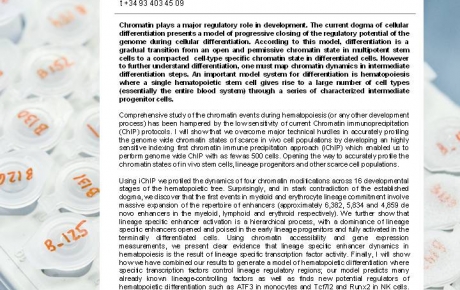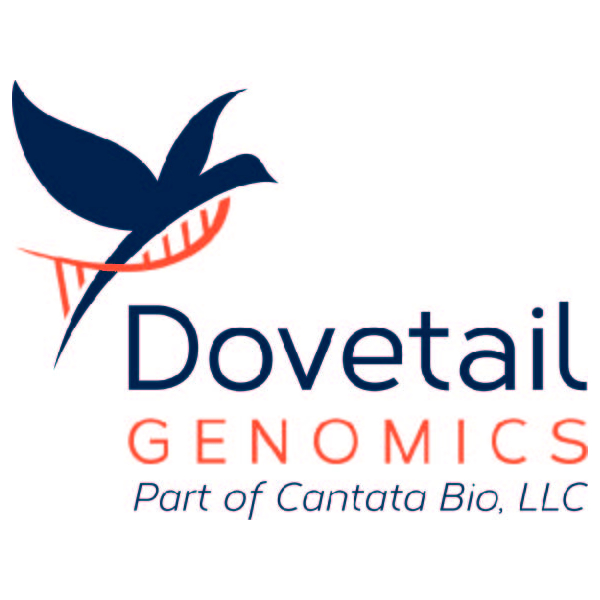Monday July 14th 2014 – 3 pm
Aula Félix Serratosa
Edifici Cluster, Parc Científic de Barcelona
Baldiri Reixac, 10 - 08028 Barcelona
t +34 93 403 45 09

Chromatin plays a major regulatory role in development. The current dogma of cellular differentiation presents a model of progressive closing of the regulatory potential of the genome during cellular differentiation.
According to this model, differentiation is a gradual transition from an open and permissive chromatin state in multipotent stem cells to a compacted cell-type specific chromatin state in differentiated cells. However to further understand differentiation, one must map chromatin dynamics in intermediate differentiation steps. An important model system for differentiation is hematopoiesis where a single hematopoietic stem cell gives rise to a large number of cell types (essentially the entire blood system) through a series of characterized intermediate progenitor cells.
Comprehensive study of the chromatin events during hematopoiesis (or any other development process) has been hampered by the low sensitivity of current Chromatin immunoprecipitation (ChIP) protocols. I will show that we overcome major technical hurdles in accurately profiling the genome wide chromatin states of scarce in vivo cell populations by developing an highly sensitive indexing first chromatin immune precipitation approach (iChIP) which enabled us to perform genome wide ChIP with as few as 500 cells. Opening the way to accurately profile the chromatin states of in vivo stem cells, lineage progenitors and other scarce cell populations.
Using iChIP we profiled the dynamics of four chromatin modifications across 16 developmental stages of the hematopoietic tree. Surprisingly, and in stark contradiction of the established dogma, we discover that the first events in myeloid and erythrocyte lineage commitment involve massive expansion of the repertoire of enhancers (approximately 6,382, 5,834 and 4,859 de novo enhancers in the myeloid, lymphoid and erythroid respectively). We further show that lineage specific enhancer activation is a hierarchical process, with a dominance of lineage specific enhancers opened and poised in the early lineage progenitors and fully activated in the terminally differentiated cells. Using chromatin accessibility and gene expression measurements, we present clear evidence that lineage specific enhancer dynamics in hematopoiesis is the result of lineage specific transcription factor activity. Finally, I will show how we have combined our results to generate a model of hematopoietic differentiation where specific transcription factors control lineage regulatory regions; our model predicts many already known lineage-controlling factors as well as finds new potential regulators of hematopoietic differentiation such as ATF3 in monocytes and Tcf7l2 and Runx2 in NK cells. Together, our results suggest a comprehensive model of chromatin dynamics during development and set the foundation for similar work on human blood formation and disease.











